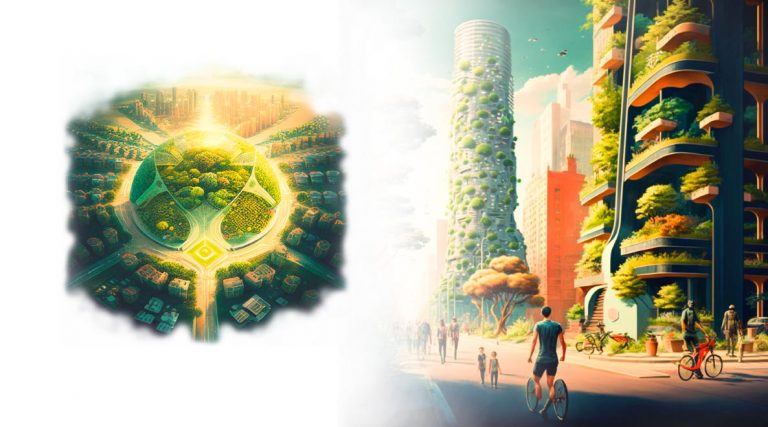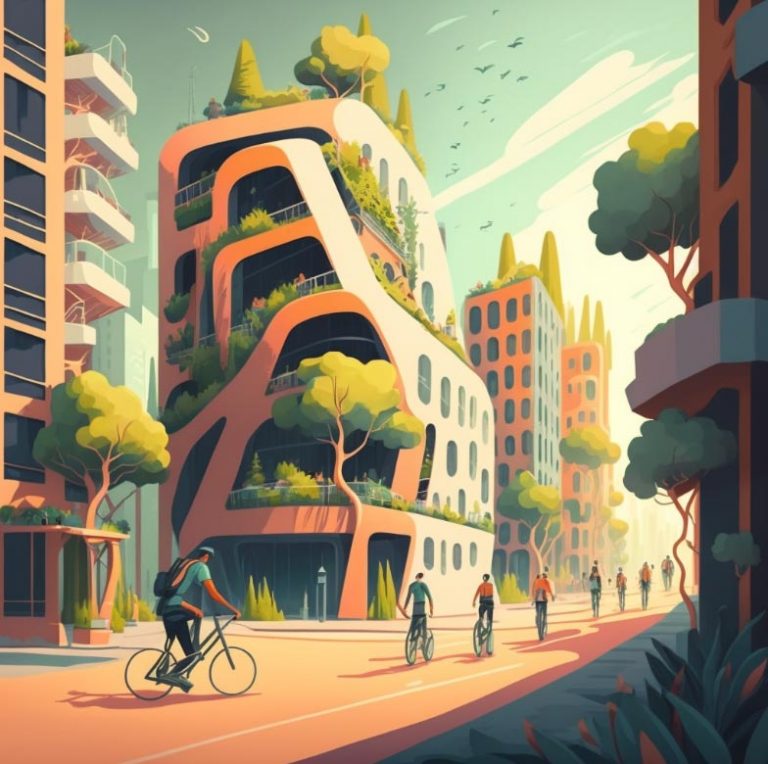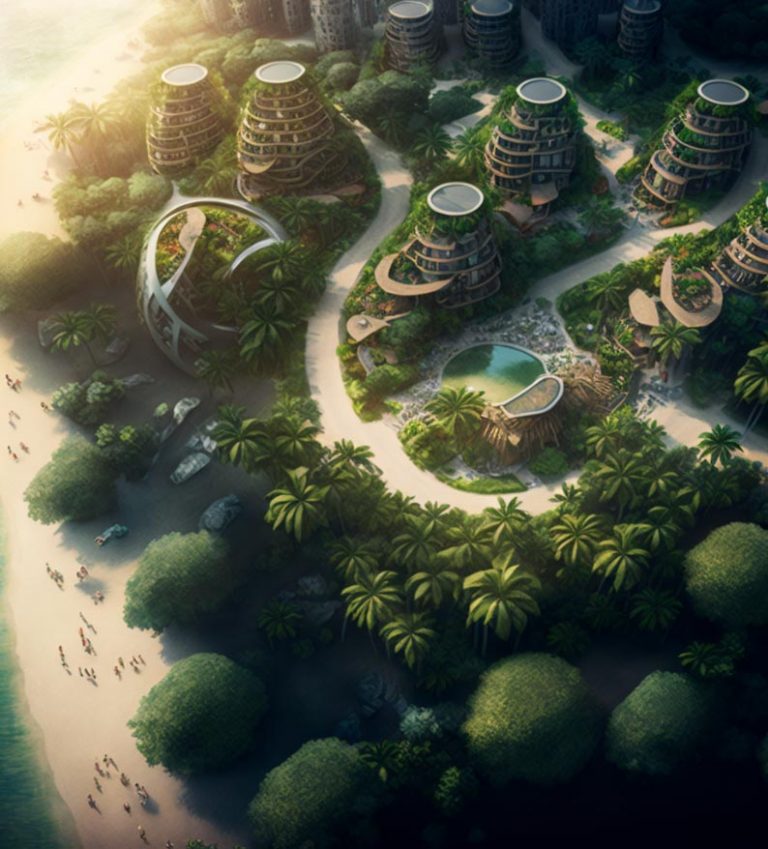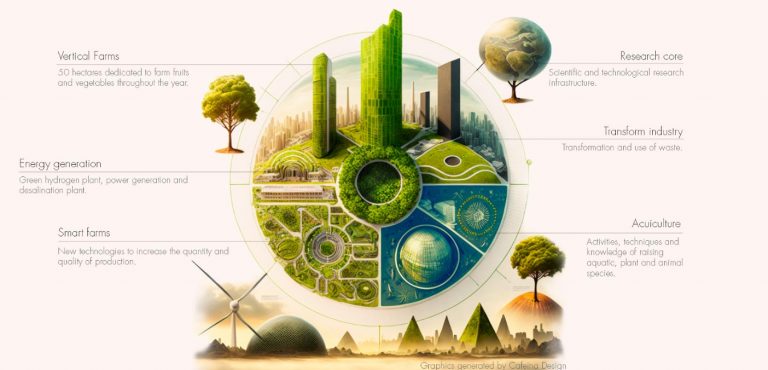

ABOUT THE AUTHOR
Isabel Sámano - Architect, Jr. Executive Project Leader
Artificial Intelligence (AI) as an auxiliary resource in design has advanced by leaps and bounds since architect Nicolas Negroponte introduced it to architecture in the 1970s. Currently, AI is related to almost all aspects of human life, architecture in particular has obtained special benefits from it. The Economist predicts that by 2027 approximately 40% of jobs will be performed through automation and/or robotics. It is time to ask ourselves if, in the field of architecture, will Artificial Intelligence be able to solve advanced and complex design problems for us?
The objective of this article is to describe how artificial intelligence has influenced the architectural profession and how at the same time it has completely changed the methodology of architectural design. We will talk about its ethical implications, creativity and originality.
Artificial intelligence has proven to be capable of solving creative tasks in various fields, including music, painting and graphic design. However, when it comes to highly complex and subjective fields like architecture, the complete replacement of creative methods with A.I. still poses significant challenges.
For architecture and design, artificial intelligence applications have been implemented, especially to facilitate the initial creative stages more focused on the aesthetic part and formal solutions that have shown great potential while opening up the identification of areas of opportunity and future development. A.I. applications in architectural design have been taken as an opportunity to creatively explore various divergent solutions to a given problem, A.I. It is capable of performing routine tasks and replacing trial and error processes, through iterative explorations, both volumetric and material, in seconds and with great precision.
Architecture is a multidimensional field that involves a combination and consideration of aesthetic, functional, cultural and social elements. Although the A.I. can be used as a complementary tool to assist architects in their work, the creation of architectural designs remains a task that involves a deep understanding of contexts and human needs.

Smart City, Cafeína Design with A.I. tools

Volumetric tests of buildings in Smart City, Cafeína Design with A.I. tools.
The A.I. can assist architects by providing more sophisticated computer-aided design (CAD) tools, generating design options based on specific parameters and assisting in the optimization of designs based on predefined criteria. This can streamline the design process and help explore a wide range of possibilities.
However, final decision making in architecture often (and until now) is based on the subjective interpretation and creative judgment of professionals. The architectural design process requires consideration of multiple factors, such as historical and cultural context, client needs, site limitations, and building regulations, among others. These complex and subjective aspects still present challenges to current AI capabilities.
In short, currently, although A.I. It can be a valuable tool in the field of architecture to completely replace architecture's own creative design process with A.I. is not yet viable due to the multidimensional and subjective nature of the discipline. Collaboration between human creativity and artificial intelligence seems to be the most promising approach today.
Implications and limitations
In addition to the factors mentioned above, there are several fields in architecture where artificial intelligence (AI) still has significant limitations. Some of them include:
Human experience: AI currently lacks the ability to understand and take into account human experience in the built environment. The subjective perception of space, aesthetic sensitivity and personal preferences are aspects that are difficult to quantify and codify in algorithms.
Historical and cultural context: Architecture is deeply rooted in the historical and cultural context of a place. Understanding architectural styles, preserving heritage, and harmoniously integrating with the surrounding environment require a deep appreciation of history and culture, something that current AIs struggle to fully achieve.
Originality: While AI can generate architectural designs based on predefined parameters and training data, originality is still considered a distinctively human trait. The ability to conceive innovative ideas, explore new forms and concepts lies in the human imagination, something that AI cannot fully replicate autonomously.
Social interaction and communication: Architecture involves a high degree of social interaction and communication with clients, users and other professionals. AI can assist in certain aspects, such as data analysis or visualization, but it still cannot replace the human ability to understand and respond to people's needs and desires in an empathetic way.
Ethics and social responsibility: Ethical decision making and consideration of social responsibility are fundamental elements in architecture. Architects must consider the impact of their designs on the community, environment and long-term sustainability. This involves ethical judgment and an understanding of human values that cannot currently be fully attributed to AI.
Subjective interpretation: Aesthetic appreciation and subjective interpretation of architecture are aspects that are difficult to quantify and define in algorithms. AI lacks the ability to understand the beauty and symbolic meaning a building can have for people. The experience of inhabiting and experiencing an architectural space is highly subjective and influenced by emotions, culture and personal context, something that AI cannot yet fully capture.
Adaptive design: Architecture often requires adaptability and flexibility to meet the changing needs of users and the environment. This implies the ability to respond to social, technological and environmental dynamics over time. AI currently relies on historical data and existing patterns, hindering its ability to anticipate and adapt to future changes in how a building will be used or in environmental requirements.
Contextual intuition: Architecture involves understanding and responding to the specific characteristics and limitations of a place, such as climate, topography, vegetation, and existing infrastructure. This deep contextual understanding, combined with intuition and empirical knowledge, is difficult to replicate in an AI. Human architects often integrate experience, observation, and intuition to make informed decisions about how to design a building consistent with its physical and social environment.
Emotional and narrative communication: Architecture has the power to tell stories and evoke emotions through design. Buildings can be cultural symbols, transmit values or tell a story. Current AI cannot generate that level of emotional and narrative communication that a human architect can achieve through their design decisions, material selection, use of light, and other architectural features.

Smart City designed through A.I. specifically for human beings through culture, recreational spaces and a mix of uses between the city and industry.

Vision for a smart city, generated by Cafeína Design through A.I. tools.
Conclusion
In summary, although AI can offer tools and assistance in various aspects of architectural design, there are still fields where human sensitivity, contextual intuition, adaptability and ethical and responsible decision making are fundamental and cannot be completely replaced by AI in architecture.
As an office we have high expectations of the development of Artificial Intelligence applied to architecture for the following years, and we are constantly updating to move towards increasingly complex applications of AI in the profession, both with respect to aesthetic exploration and optimization of space and its technical solutions. At this moment, the results that at Caffeína Design we have achieved through the collaboration between human creativity and artificial intelligence applications have allowed us to venture into the topic, learn, explore, have fun and enjoy technology as a design tool that allows us to create human, innovative and positive visions of the future.
Want to know more about this topic?
Contact us
